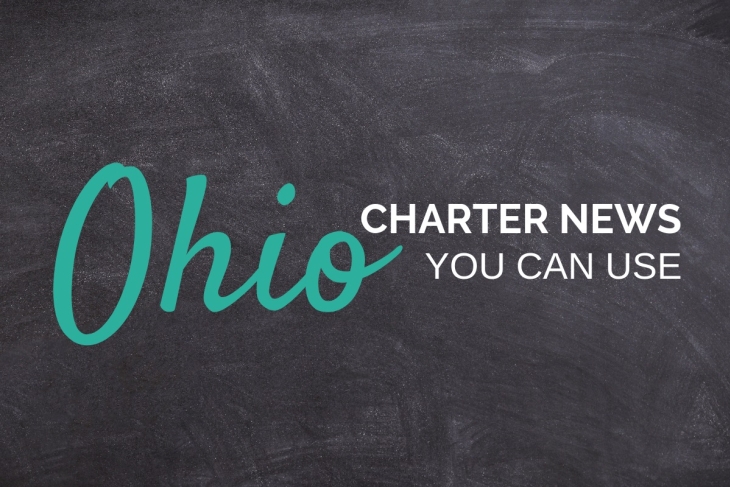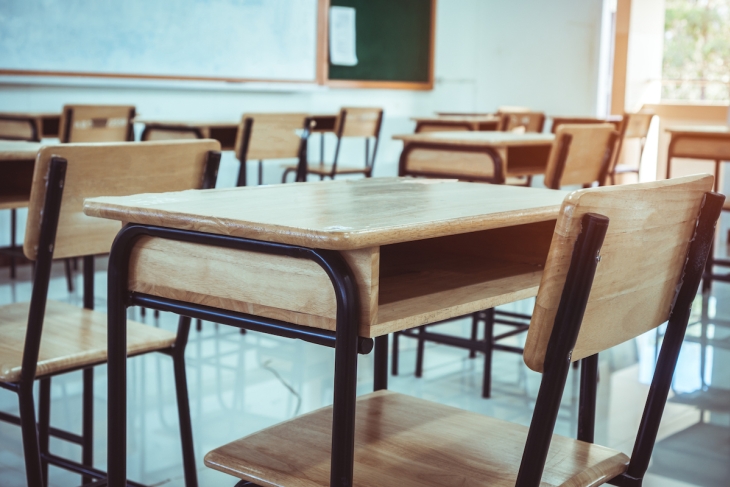Covid-19 sent a shock wave through an already changing U.S. job market, provoking “a great reassessment of work in America.”
This broad rethinking of work and human capital development is occurring while 10.4 million jobs sit unfilled and more than 8.4 million unemployed individuals look for work. There is a clear disconnect, but the ultimate outcome is far from clear.
As Bob Dylan asks in “Ballad of a Thin Man,” “…something is happening here, but you don’t know what it is, do you, Mister Jones?”
But even without this clarity, reassessment has an upside.
It’s an opportunity to expand two promising approaches to education, training, and hiring that prepare young people and adults for jobs and careers in this new world of work: career pathways programs and skill-based hiring.
This reassessment is a form of creative destruction, or the process through which new approaches replace existing ones made obsolete over time. What emerges is a social capital development narrative, an account that chronicles how individuals acquire knowledge and relational networks—or social capital—that help them succeed and flourish.
Why are we reassessing work in America? By my count, there are at least six reasons.
First, we are seeing substantial workforce attrition (colloquially known as the “big quit”), which manifests in a large increase in worker retirements (at 3.6 million since the pandemic, 2 million more than expected) and resignations (up 13 percent from pre-pandemic levels), eliminating skilled workers from the labor pool.
Second, there’s a workplace skills mismatch, with the work experience of individuals misaligned with marketplace needs. For example, job vacancies in areas like wholesaling, food services, and health care are greater than the number of unemployed individuals with experience in those fields.
Third, there’s a geographic mismatch, with workers living in different places than where jobs can be found. For example, on average, there are more job openings in the South and Midwest where unemployment is low than on the West and East coasts where the opposite is true.
Fourth, the pandemic has moved individuals to take their time when seeking employment, reconsidering what they want to do with their lives and work.
Fifth, young adults, especially high school graduates, are acting differently than in the prior two recessions (and differently than older cohorts). Since February 2020, they have entered the labor force at higher rates, rather than enrolling in higher education. Those with less than a college degree have enjoyed higher wages than they would have prior to the Covid-19 pandemic.
Finally, individual entrepreneurship is on the rise, as measured by applications for new businesses. While applications were down during the early part of the pandemic, they surged in the second half of 2020 and have continued rising through at least May 2021.
These varied factors make clear the need for a long-term reassessment of not just work, but education and labor force development—and specifically the need to invest in career pathways programs and skills-based hiring. Both deal pragmatically with two stubborn labor market facts that will not disappear any time soon: Nearly two-thirds (65 percent) of the U.S. labor force does not have a college degree, and there are many good middle-skills jobs for high school graduates without a college degree.
Pathways programs
For at least a decade, K–12 schools, post-high school education and training programs, and local civic partners have been testing an approach to job and career preparation that doesn’t insist that everyone needs a four-year college degree to get a good job. These career pathways programs link schools and students with employers and work, incorporating education, training, and student support services. They help young people build bridges to the personal and professional networks they need to flourish, with these connections fostering social capital by initiating new relationships.
They are characterized by three features.
First, there are two foundational elements for a young person’s pursuit of opportunity: knowledge and networks—what students know and who they know. Pathway programs prepare young people to pursue opportunity by acquiring both knowledge and networks.
Second, there’s an aspirational goal: Ensure that everyone—regardless of background or current condition—has multiple pathways for acquiring the knowledge and networks needed for jobs and careers, preparing them to access opportunity and a flourishing life.
Finally, there are four features of a successful program that can be duplicated in almost any community.
Credentials that pay. Programs offer an academic curriculum linked with labor market needs and award a recognized credential to participants that leads to a decent income.
For example, Building Futures, a Rhode Island Registered Apprenticeship program, works with twenty-nine public, private, and nonprofit organizations to provide apprenticeships and a nationally recognized credential in a variety of fields, including construction, health care, information technology, and marine trades. The program includes work placement and wage progression.
A civic compact. Written agreements describe responsibilities among the many organizations involved. Partners range from employers and trade associations to organizations like United Way and community foundations.
For example, the New Orleans civic partnership YouthForce NOLA offers high school students career exposure and work experience, soft skills training, student coaching, and paid internships for seniors in areas that include health sciences, digital media and IT, and water management. This civic collaborative has seventeen funders, twelve steering committee members, dozens of student coaches, and eleven civic leaders as board members.
Work exposure and experience with an advisory system. Programs begin no later than middle school, with speakers and field trips. High school involves work placement and internships. Student advisors help them make informed choices and ensure they complete the program.
For example, Cristo Rey, a national network of thirty-eight Catholic high schools serving 12,300 students, has a Corporate Work Study Program with an advisory system that assigns students—40 percent non-Catholic, 98 percent minority—five days a month to entry-level jobs with over 3,400 partners, following up with any personal support services they need. Students earn 60 percent of their tuition through employment.
Supporting policies. Local, state, and federal policies and directives create a framework for program development—for example, a policy creating incentives for K–12, postsecondary institutions, labor, and workforce groups to integrate their separate funding encourages stable financial support.
In short, pathway programs integrate schools and students with employers and work. They create social capital for young people by initiating new relationships that expand their knowledge and networks. They combine habits of mind and association, with the aim of helping young people acquire the knowledge and relationships necessary to pursue opportunity.
Skills-based hiring
Skills-based hiring evaluates a person’s current capabilities and competencies, matching them to jobs. It includes technical and digital skills, social skills like persuasion and negotiation, and other skills like communication and problem solving. This allows employers to hire individuals based on the skills they have rather than relying on the four-year college degree as the premier credential for a job. Many major employers have begun using this approach, including the likes of Google, EY (formerly Ernst & Young), Penguin Random House, Apple, IBM, and Bank of America. Some turned to skills-based hiring before the pandemic, others began following the Covid-19 disruption.
Since 2019, LinkedIn has seen a 21 percent increase in U.S. job postings listing skills and responsibilities instead of qualifications and degree requirements and a nearly 40 percent increase in the number of positions that do not require a degree. It has also developed Skills Path so firms can define the skills they need for a job and match them to potential employees. Employees then have free access to curated LinkedIn Learning courses allowing them to complete assessments, gain additional skills, and earn a phone screen call with the company, often leading to a job. This tool is now being used by more than a dozen employers, including Gap, Microsoft, Citrix, and Wayfair.
Another example companies use to foster skills-based hiring (and employee development) is the “skills hub.” This company unit tracks and manages the firm’s skills needs, considering supply and demand, including creating general learning programs for all employees or focused ones for particular roles. Their four tasks include assessing job applicants, forecasting future skill needs, managing training, and tracking the successes or setbacks of its work.
Both pathways programs and skills-based hiring level the playing field for those who do not have college degrees, expanding talent pools and making them more diverse and inclusive. For example, a common hiring assumption is that low-wage workers without four-year college degrees are low-skilled. But one analysis found that 16 million U.S. workers with only a high school diploma had skills for high-wage work (defined as more than twice the national median wage). Eleven million of them were employed in low- or middle-wage work. Another analysis shows that the college degree bias eliminates 79 percent of Latinos, 68 percent of African Americans, 73 percent of rural residents, and 66 percent of America’s veterans from potential employment based on the skills they have.
Even company training benefits reflect this exclusivity. Of the $177 billion employers spend annually on formal training, 58 percent is spent on employees with a bachelor’s degree or higher, compared to 25 percent on workers with some college experience and 17 percent on workers who attained a high school diploma or less. In other words, employers are missing out on talented workers.
Together, these two approaches form an opportunity agenda that offers faster and cheaper pathways to jobs and careers than traditional education settings, including the college degree.
They help individuals cultivate an occupational identity and vocational self. Choosing an occupation and developing a broader vocational sense of one’s values, abilities, and personality are important for success as an adult.
They advance opportunity pluralism, offering individuals multiple education, training, and credentialing pathways to work and career—including, for some, a college degree. But instead of equalizing opportunity through a four-year degree pathway, the range of opportunities for individuals is broadened, making the nation’s opportunity infrastructure more pluralistic.
They create a social capital development narrative focused on individual agency and the acquisition of knowledge, networks, habits, and skills necessary for successful participation in American society.
Finally, they place individuals on a trajectory to economic and social wellbeing, informed citizenship, and civic responsibility, laying a foundation for a lifetime of opportunity.
Editor’s note: This was first published by American Compass.














